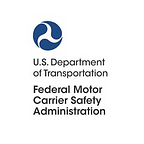7 Grant Writing Tips from the Federal Motor Carrier Safety Administration
Interested in how to apply for federal grants? Here are seven federal grant writing tips for organizations applying for the Federal Motor Carrier Safety Administration grants. FMCSA funded projects include training and technology for commercial drivers, increasing research efforts, conducting outreach and education, and enhancing compliance with the national commercial driver’s license program. Many organizations are eligible and should consider these tips below.
Tip 1: Research available grants and choose the right one for your organization. For example, if your agency is a truck driver’s school or local law enforcement agency, you may be eligible for one of the FMCSA’s grants. Each grant has specific eligibility requirements and criteria. See the chart below for an overview and visit FMCSA’s website for more details or www.grants.gov.
FMCSA Discretionary Grants:
High Priority Innovative Technology Deployment Grant
· State & local government
· Special district agencies
· Individuals and businesses are not eligible
Helps develop and advance technology for commercial motor vehicle operations.
High Priority Commercial Motor Vehicle Grant
· State & local government
· Special district agencies
· Institutions of higher education
· Non-profit organizations
· For-profit entities
· Other organizations
· Individuals and businesses are not eligible
Improves safety and FMCSA compliance at the local, state, and national level.
Commercial Motor Vehicle Operator Safety Training Grant
· State & local government
· Special district agencies
· Institutions of higher education
· Non-profit organizations
· For-profit entities
· Native American tribal governments
· Vocational technical schools
· All applicants must comply with the Entry-Level Driver Training (ELDT) regulations and listed on FMCSA’s Training Provider Registry.
· Individuals are not eligible.
Helps states and others comply with the national commercial driver’s license program.
Commercial Driver’s License Program Implementation Grant
· State & local government
· Institutions of higher education
· Non-profit organizations
· For-profit entities
· Native American tribal governments
· Individuals are not eligible.
Helps to increase and train commercial driver’s license holders.
Tip 2: Check lists of past grant recipients. Does your organization have similar capabilities to these past awardees? Comparing your organization to past grant awardees may help you decide which grant to choose and how much your agency may be awarded. Past FMCSA grant recipients include state highway patrol and local police departments, state driver’s license agencies, not-for-profits, higher education institutions, community colleges and others.
Click below to view organizations who received FMCSA grants.
· Past CMVOST Grant Recipients
· Past HP-ITD & HP-CMV Recipients
Tip 3: Starting early is one of the best grant writing tips for beginners. Preparing a compelling grant application can happen year-round. Experienced or certified grant writers allow plenty of time to read the application thoroughly and ask questions. You may also need time to create a Title VI Compliance plan and register at SAM.gov and at Grants.gov. Don’t wait for the grant to be posted (a Notice of Funding Opportunity announces applications are being accepted) to start the application process. Don’t wait until the last minute to submit the application.
Tip 4: Utilize available resources for grant applicants. Often there are webinars, videos, webcasts and other documents to help apply for federal grants. FMCSA routinely offers webinars called online funding conferences in the fall.
Tip 5: Follow all grant application instructions. FMCSA publishes a Notice of Funding Opportunity, (NOFO) for each grant with specific requirements, criteria and instructions. Find NOFOs at www.grants.gov. Follow the NOFO for detailed instructions and requirements, such as font, type size, and page limitations. Reach out to the contact listed in the NOFO if you have questions.
Tip 6: Fully explain the project in a structured, compelling format. Your application should include a:
· Introduction: Explain the project purpose, including what specific grant priorities the project will address.
· Problem Statement: Describe and quantify the problem with baseline numbers to establish a starting point. Then explain how your project solves the problem.
· Performance Objective: Describe and quantify the anticipated project outcome.
· Program Activity Plan: Outline activities required to achieve the performance objective, including a timeline and benchmarks.
· Performance Measurement Plan: Explain how progress toward the performance objective will be measured (hours, carrier contacts, inspections, number of students, etc.). Measures should include key milestones and timelines.
· Monitoring Plan: Explain the method that will be used to monitor the project’s progress.
· Budget: Justify all costs necessary to complete the project.
Tip 7: Proofread and check the math. A math error or spelling mistake can ruin your credibility. Consider having someone outside your organization read your proposal to ensure it’s easily understood.
Whether you’re looking to fund truck driver training for military veterans, stop sex trafficking, improve technology for drivers or reduce highway crashes, consider FMCSA grants. Use the grant proposal tips above and other available tools to confidently apply.
To learn more about FMCSA grants, visit: https://ai.fmcsa.dot.gov/Grants/default.aspx or research all federal grants at www.grants.gov.
